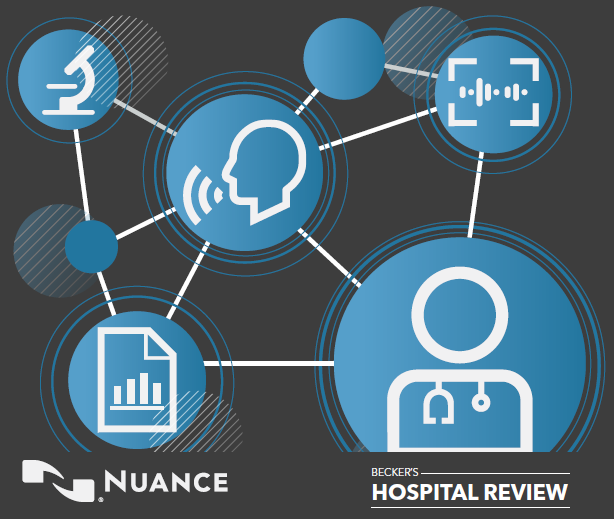
“Today, clinicians complete a majority of administrative tasks on an EHR or other electronic system. Physicians spend, on average, 50 percent of their work day entering data into EHRs [electronic health records] and completing clerical work, nearly twice as much as the 27 percent of work hours spent interacting with patients, according to a 2016 study in Annals of Internal Medicine.
Physicians attribute additional time in front of the EHR, in part, to inefficient data entry processes that make clinical documentation tedious and time consuming. EHR interfaces that require physicians to click multiple times to navigate a single medical record have given rise to a condition known as “click fatigue.” Click fatigue is directly correlated to the number of mouse clicks the provider must make to use their EHR and related solutions. More clicks correspond to longer time spent on data entry. Internal medicine residents spent about five hours a day entering data for 10 patient records, according to a 2016 study in Journal of Graduate Medical Education.
Excessive hours of EHR box-checking and data entry have taken a toll on U.S. physicians. Providers who use EHRs and computerized physician order entry report lower levels of job satisfaction and higher rates of burnout compared to their counterparts who still use paper, according to a 2016 Mayo Clinic Proceedings study.
The introduction of EHRs into patient-physician encounters has contributed to dissatisfaction among both parties. Increased data entry requirements infringe upon physician-patient time, which is central to medicine and a primary reason 50% of work day spent entering data into EHRs click fatigue many clinicians choose to practice. Physicians report that 37 percent of their time is spent documenting in the EHR and completing desk work during patient visits. The Annals of Internal Medicine reports that patient satisfaction decreases as a result. This is alarming as patient dissatisfaction may influence certain health outcomes, such as medical adherence and continuity of care.
Physician burnout puts patients’ wellbeing at risk. Nearly 50 percent of physicians believe overwork, stress and fatigue among their colleagues significantly contributes to medical errors, according to a 2014 study in The New England Journal of Medicine. And the problem continues to grow. The number of physicians who reported experiencing symptoms of burnout rose 10 percent between 2011 and 2014, Mayo Clinic Proceedings found.
Hospitals must address the process inefficiencies that create clerical overload. Relieving administrative burden through automated data intelligence is a strategic priority for hospitals seeking to address physician and patient dissatisfaction and improve clinical retention …
Artificial Intelligence (AI) technology deployed in the clinical setting helps reduce clinician frustration and supports quality patient care. AI software uses sophisticated analytics and data abstraction to help businesses better manage large quantities of information. In healthcare, AI software employs data management tools to help clinicians use extensive EHR data to inform patient care in real time. It does this by analyzing the patient medical note in progress, as well as every EHR entry concerning that patient, to identify gaps in information. Physicians’ administrative burden is significantly improved when documentation is complete and compliant from the start and the need for rework is eliminated.”
I suppose that cloud platform and automation of diagnostics should be clearly distinguished. Immense advantage of SaaS platform is unification and transparency of the data, which alone should significantly diminish the risk of errors in diagnostics simply due to timely delivery of crucial information.
As such, it doesn’t have anything in common with automatic diagnostics with AI. Rather, the data collected in the cloud may further be used as an input to an AI system assisting diagnostics as a separate SaaS service. Here one or many of existing diagnostic systems can be optionally plugged in.